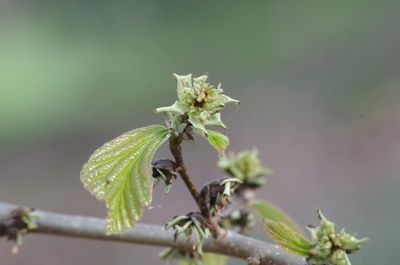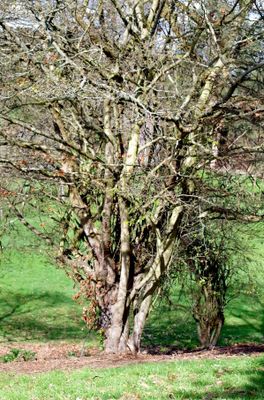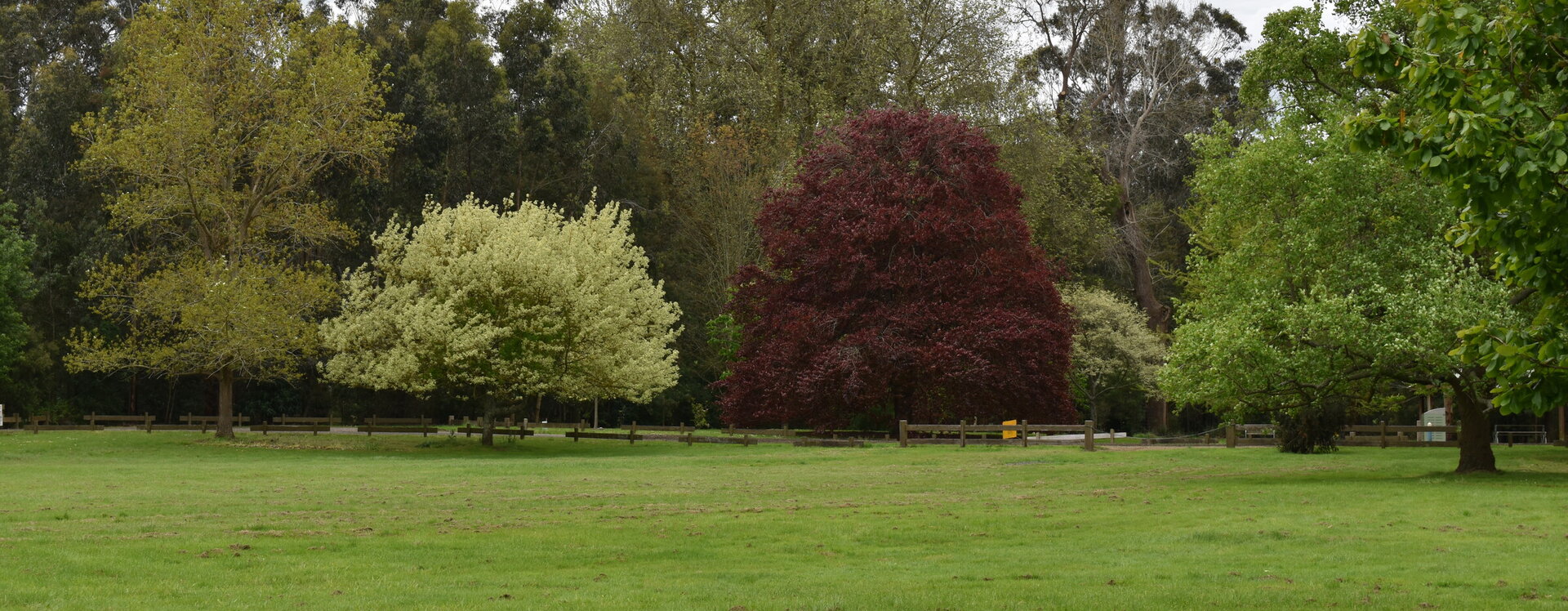




Parrotia persica
Parrotia
Parrotia persica, common name Persian ironwood or Persian witch hazel, is a deciduous tree in the family Hamamelidaceae, closely related to the witch-hazel genus Hamamelis. It is native to Iran's Caspian region (where it is called انجیلی anjili) and Iranian Azerbaijan (where it is called Dəmirağacı). It is endemic in the Alborz mountains, where it is found mainly in Golestan National Park. The species was named by Carl Anton von Meyer to honor his predecessor at the University of Dorpat, German naturalist Georg Friedrich Parrot. This species is listed as critically endangered by the IUCN (under its former name of Shaniodendron subaequale, which is no longer an accepted name for the species).
Parrotia persica grows swiftly when young, maturing in gardens to 30 m tall and 8–15 m broad, multi-stemmed and naturally somewhat congested but prunable to a single trunk up to 150 cm in diameter. The bark is smooth, pinkish-brown flaking/peeling to leave a mosaic of cinnamon,
pink, green, and pale yellow patches in a similar manner to plane trees. The leaves are alternate, ovoid, often slightly lop-sided, 6–15 cm long and 4–10 cm across, with wavy margins; they are glossy green, turning in autumn to a rich purple to orange and brilliant red, often on
the same tree. The flowers are somewhat similar to witch-hazel flowers but dark red; they are
likewise produced in late winter on bare stems, but differ in having only four rounded sepals with no petals; the stamens are however fairly conspicuous, forming a dense red cluster 3–4 mm across. The fruit is a two-parted capsule containing two seeds, one in each half. Planted in 1987.
99.00 Location C4 Latitude; -38.401897590000 Longitude; 146.052443050000

